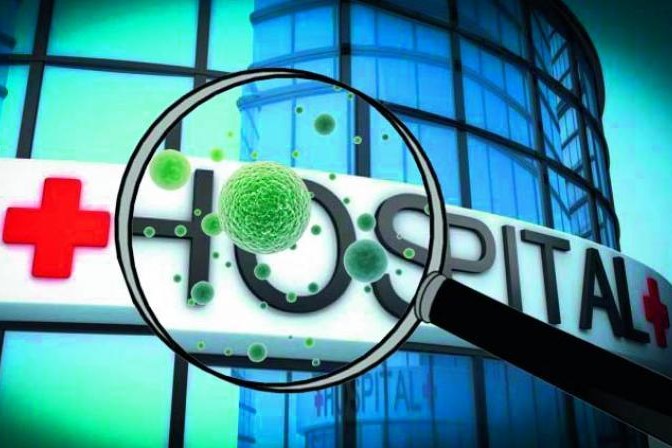
Hygiene and patient care: how to prevent the spread of healthcare-related infections
Hygiene is an integral part of rescue and patient care, as is the safety of the patient and the rescuer
In an emergency, knowing how to save a life or help protect someone from serious injury or physical harm is a priceless skill.
But also being aware of the exposure of a wound to otherwise harmless pathogens is of paramount importance.
When a person can be treated by a doctor in a hospital, they are treated under sterile conditions.
However, many environments are not ideal for administering first aid in an emergency situation.
If a victim’s wound or injury area becomes infected, it can significantly increase the severity of the injury.
Ambulance, emergency room and hospital wards hygiene: what are healthcare-associated infections?
Nosocomial infections are infections acquired in hospitals, nursing homes, clinics, diagnostic laboratories and stays in intensive care units or other long-term care facilities.
The most frequent type of hospital-related infection in Western countries is catheter-associated urinary tract infection, surgical site infection, central line-associated bloodstream infection, ventilator-associated pneumonia and Clostridium difficile infections.
The various agencies in individual countries work tirelessly to monitor and prevent these infections because they pose a major threat to patient safety.
How do healthcare-associated infections spread?
Healthcare-associated infections spread to susceptible patients in clinical settings through various ways, such as bed linen, air droplets and other contaminated equipment.
Healthcare workers can also spread the infection through contaminated equipment.
The infection can also come from the external environment, from another infected patient or from staff.
In some cases, the micro-organism originates from the patient’s skin microbiota, becoming opportunistic after surgery or other procedures that compromise the protective skin barrier.
Although the patient may have contracted the infection from the skin, it is still considered nosocomial because it develops in a healthcare setting.
Who is at risk of healthcare-associated infection?
All persons admitted to hospital are at risk of contracting hospital-acquired infections.
You have a higher risk if you are ill or have undergone surgery.
Some people are more vulnerable than others, including:
- premature infants
- very sick children
- elderly people
- frail people
- people with certain medical conditions, such as diabetes
- people with low immunity
Risk factors for acquiring a healthcare-associated infection
Other risk factors may increase the risk of acquiring healthcare-associated infections.
These include:
- Longer length of stay
- Surgical procedures
- Inadequate hand hygiene practices
- Invasive procedures
- Wounds, incisions, burns and ulcers
How to prevent healthcare-related infections?
Did you know that millions of people suffer from healthcare-related infections every year?
Here are some tips on how to prevent the spread of infections.
Hand washing
Of the millions of healthcare-associated infections suffered each year, many are preventable by the simple act of washing hands.
Hand washing kills harmful bacteria and prevents them from spreading to other parts of the body or to other people.
When one person comes into contact with bacteria, spreading it to others is as simple as touching another person’s contaminated hand or an instrument used to treat them.
Washing hands regularly, and especially when in direct contact with others, kills bacteria and prevents the onset of infections.
Using sterile materials
Treating an injured or sick victim using contaminated materials is an easy way to spread infection.
In an out-of-hospital rescue or emergency room emergency, sterile instruments or bandages are not always available.
However, there are many things you can do to use the materials you have on hand as safely as possible.
For example, having access to a simple first aid kit gives you access to clean gauze.
Being prepared with the essentials allows you to intervene in an emergency and prevent the spread of infection and bacteria.
Seek immediate medical attention
After receiving sufficient first aid treatment for injuries such as wounds or burns, many people believe they can return to their normal activities without seeing a doctor.
After all, if the bleeding has stopped, doesn’t that mean that everything is OK?
But unfortunately, because bacteria are smaller than the eye can see, an infection can quickly grow in front of our eyes without us noticing it.
Therefore, even if a person thinks he or she is safe after a first aid crisis, it is still crucial to see a doctor to examine the wound and provide appropriate care to ensure that the infection does not spread.
Proper education on first aid and basic life-saving skills is essential to provide the best care during an emergency and protect yourself and the victim from healthcare-associated infections.
Read Also
Emergency Live Even More…Live: Download The New Free App Of Your Newspaper For IOS And Android
Vapourised Hydrogen Peroxide: Why It Is So Important In Sanitary Disinfection Processes
Contamination Of Materials In A Hospital Environment: Discovering Proteus Infection
Bacteriuria: What It Is And What Diseases It Is Associated With
5 May, Global Hand Hygiene Day
Focaccia Group At REAS 2022: The New Sanitization System For The Ambulances
Sanitising Ambulances, A Study By Italian Researchers On The Use Of Ultraviolet Rays
Focaccia Group Enters The World Of Ambulances And Proposes An Innovative Sanitisation Solution
Scotland, University Of Edinburgh Researchers Develop Microwave Ambulance Sterilisation Process
Ambulance Disinfection Using A Compact Atmospheric Plasma Device: A Study From Germany
How To Decontaminate And Clean The Ambulance Properly?
Preoperative Phase: What You Should Know Before Surgery
Sterilization With Hydrogen Peroxide: What It Consists Of And What Advantages It Brings
Integrated Operating Rooms: What An Integrated Operating Room Is And What Advantages It Offers


